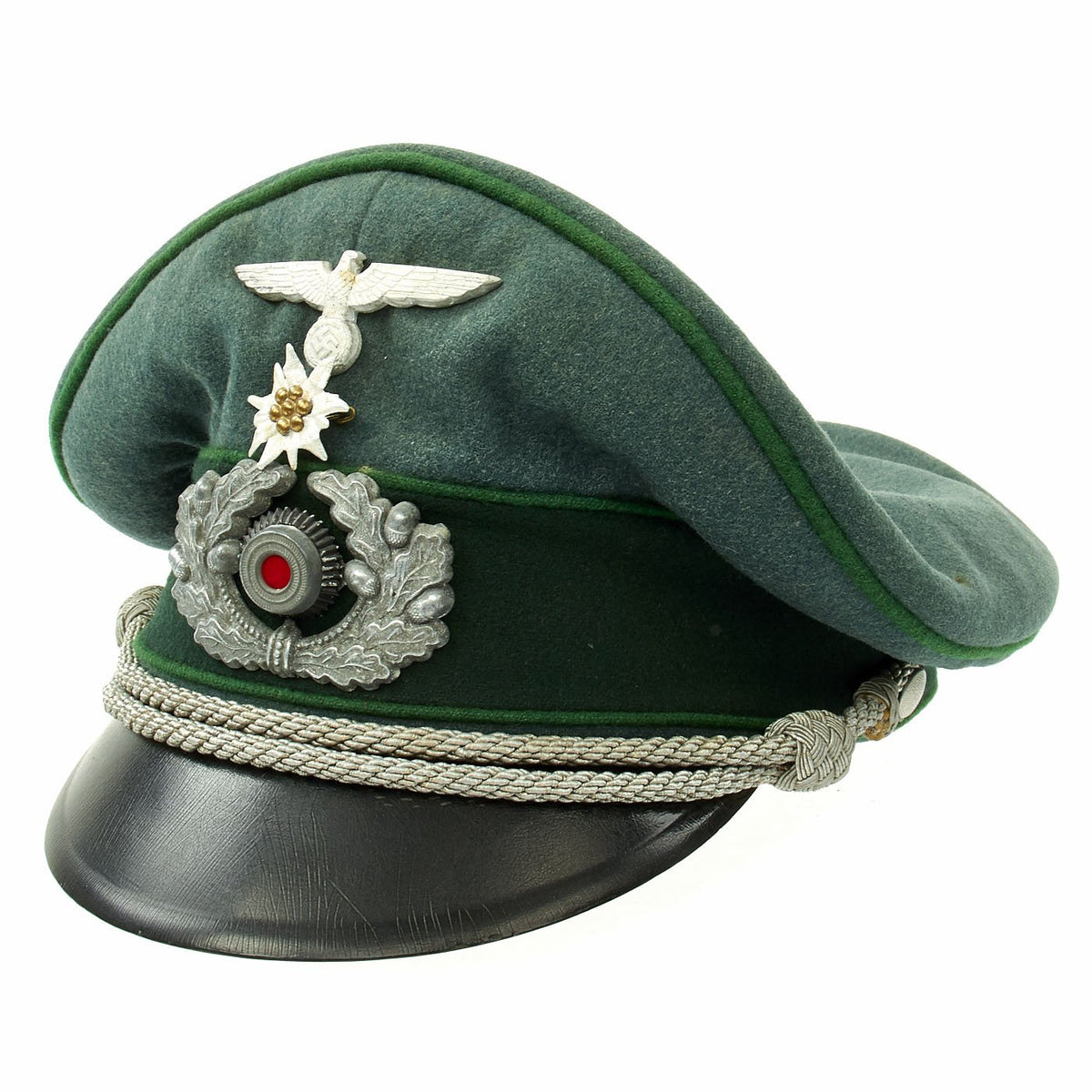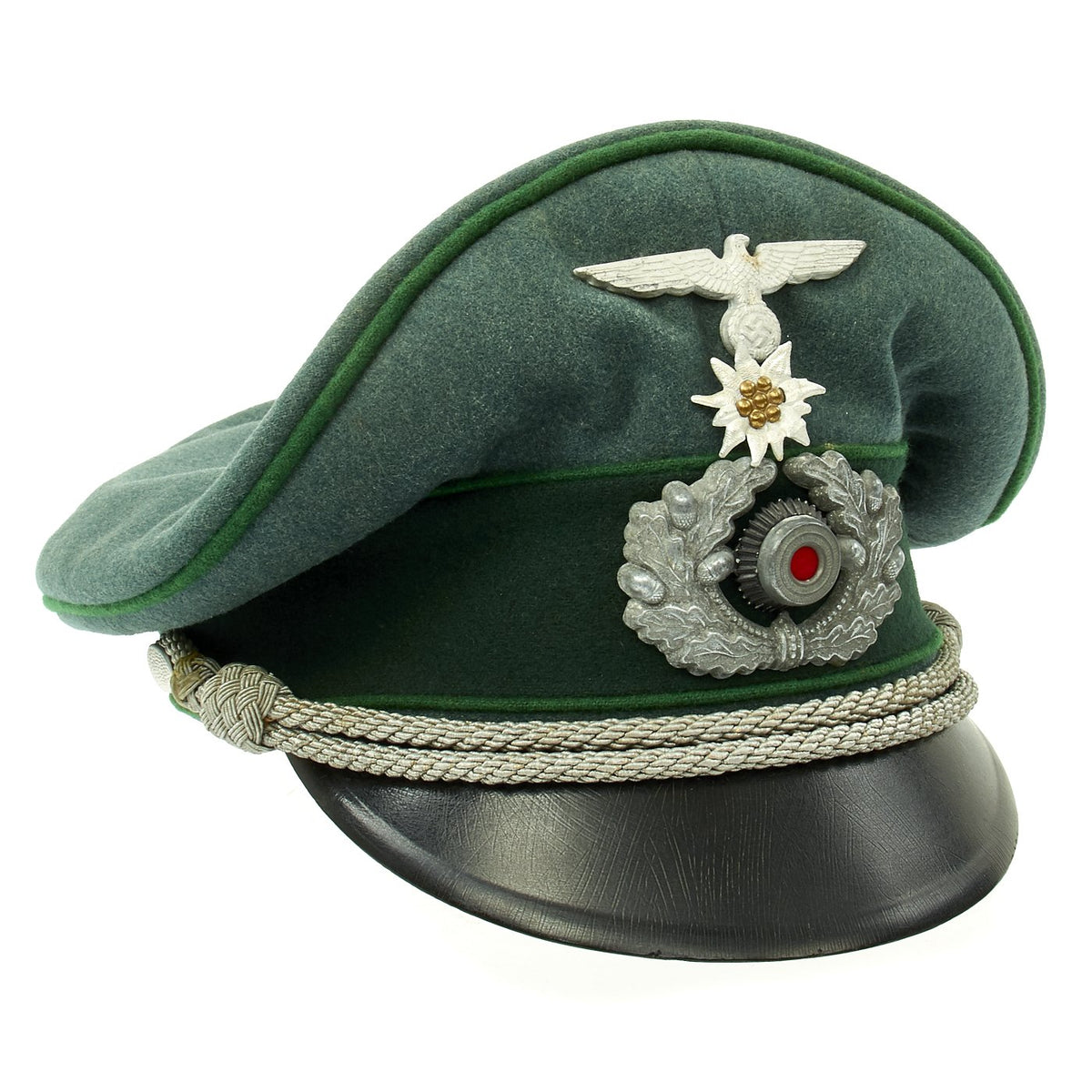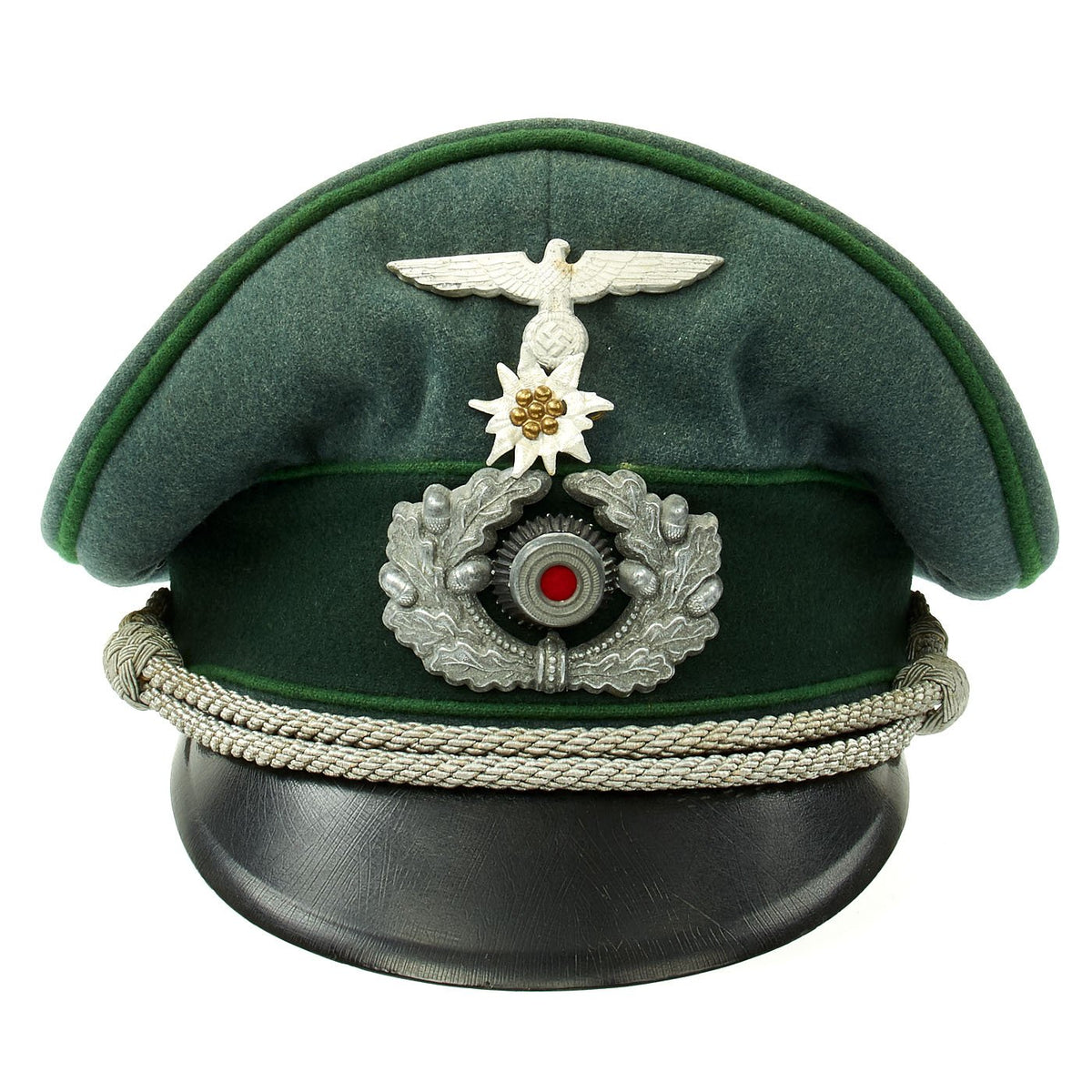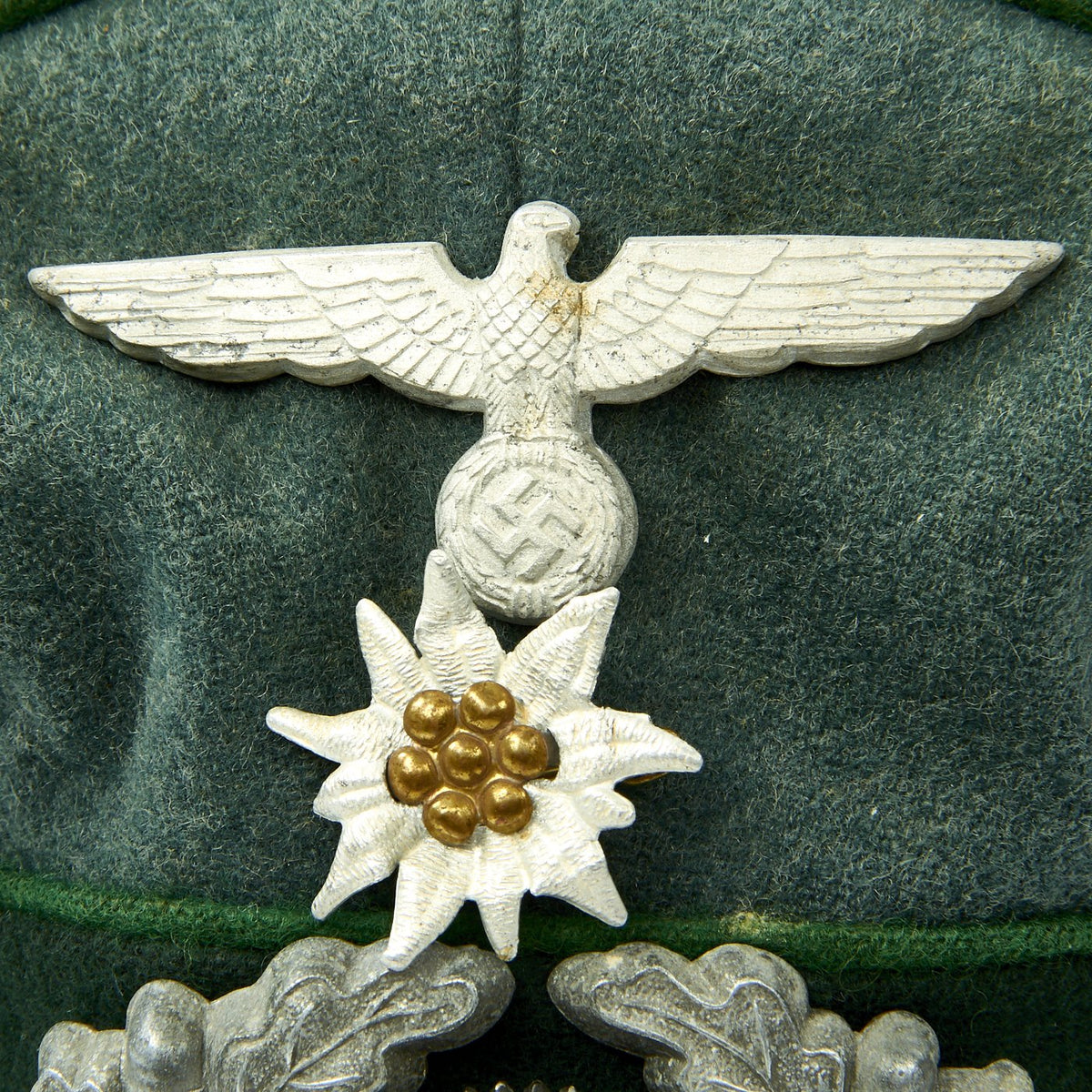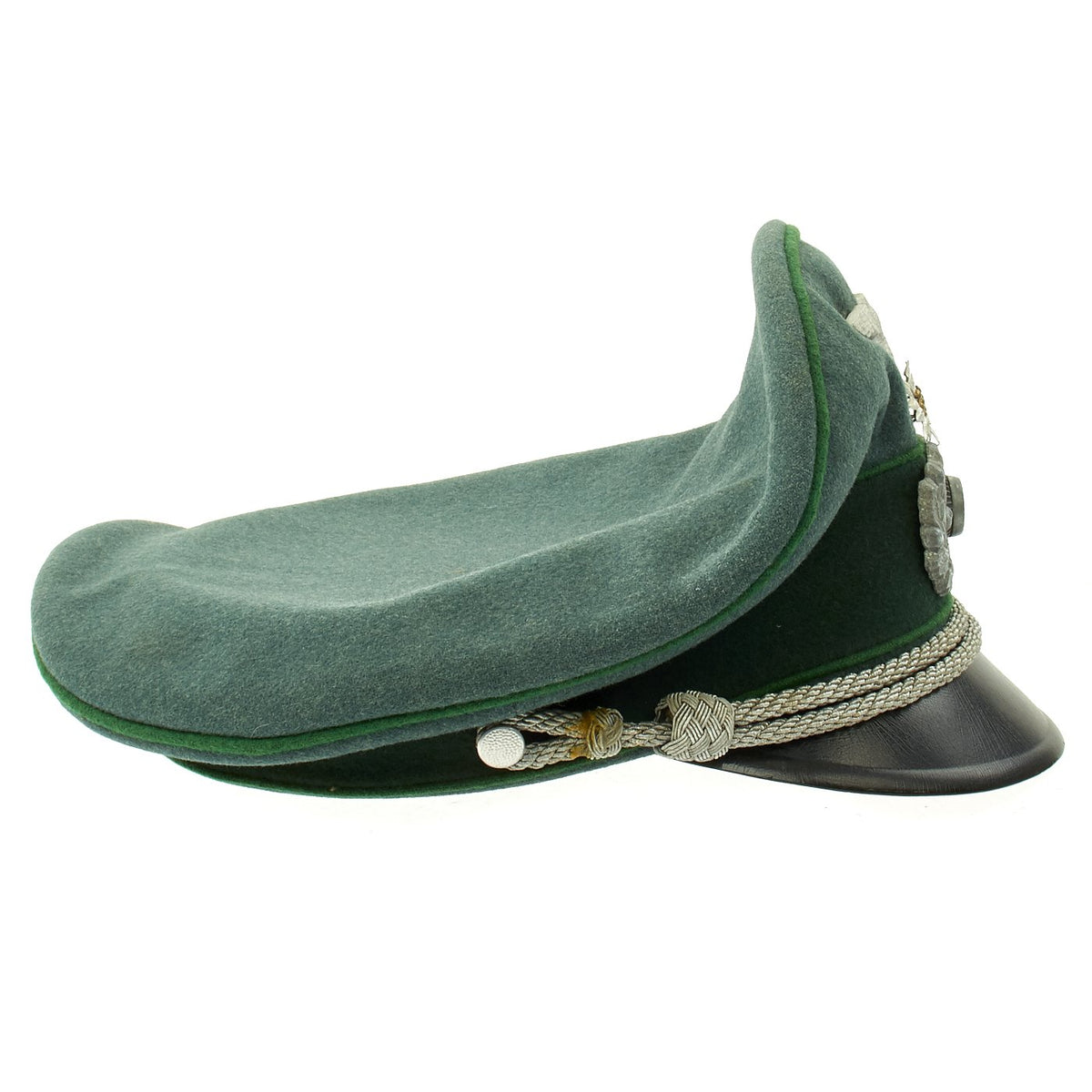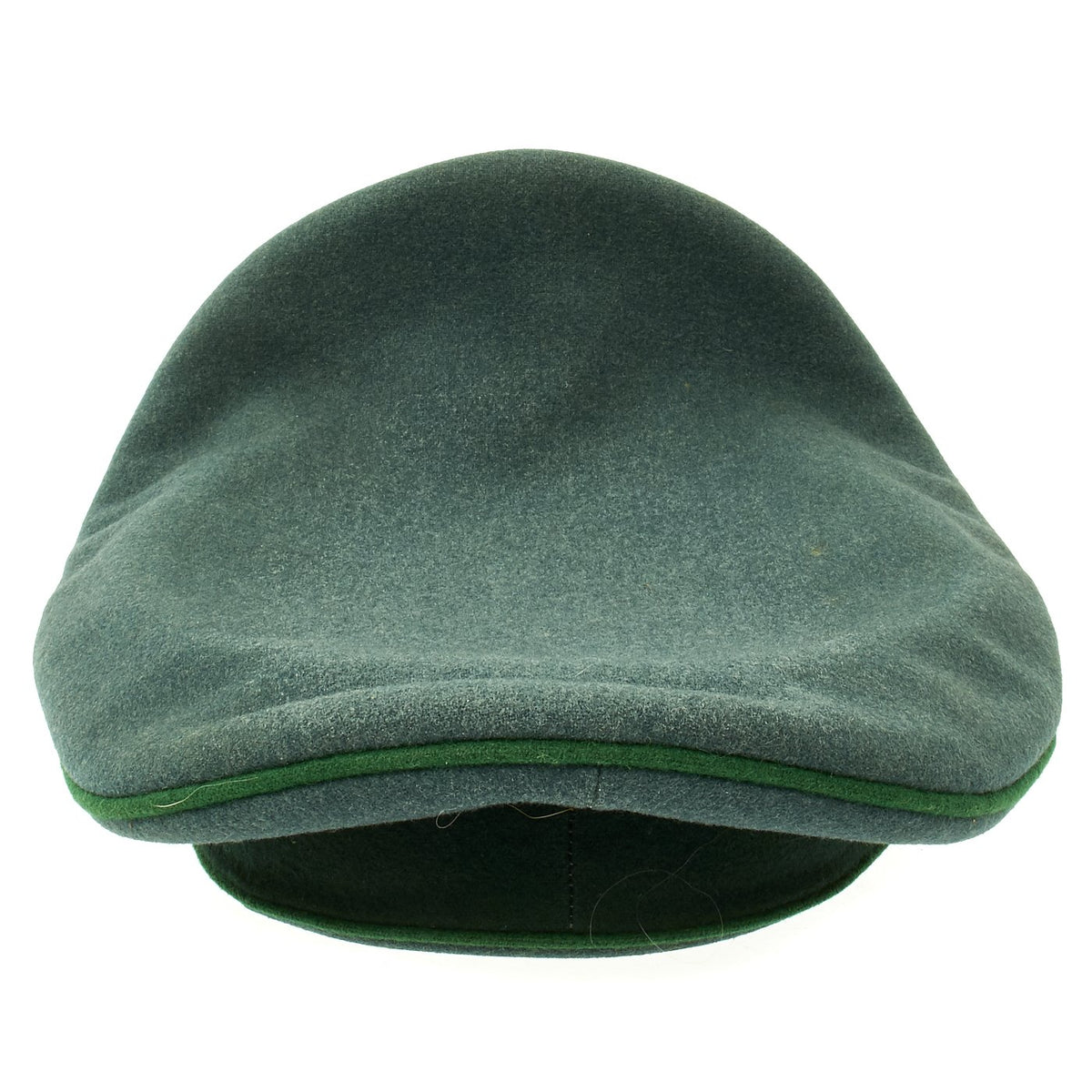Original German WWII Gebirgsjäger Mountain Troop Officer Visor Cap by LLD Original Items
$ 995,00 $ 248,75
Original Item: Only One Available. Third Reich Wehrmacht Heer Gebirgsjager Officer visor hat maker marked with gold maker logo on celluloid sweat sheild in crown LLD. Size is approximately 60 cm (US 7 1/2) This Jager peak visor cap has a fine field green moleskin wool crown, with dark green wool cap-band and green piping. The peak visor cap retains a metal eagle and swas pin, a wonderful totally genuine metal Edelweiss Cap Badge pinned to hat, plus a fine metal oak leaves with red felt centered cockade. The chinstrap is classic sliver officer cord. The inner lining is brown cotton with celluloid diamond. The name tag slot of the celluloid has some damage but also retains an original paper label with name. The visor retains much of its finish both on top and beneath with some crazing. The faux leather sweatband is intact with some areas of minor dmage. This Gebirgsjäger Officer peak visor cap is in very good condition with a classic crush shape.
Gebirgsjäger material is among the most popular of all German WWII items. Gebirgsjäger are the light infantry part of the alpine or mountain troops (Gebirgstruppe) of Germany and Austria. The word Jäger (meaning “hunter” or “huntsman”) is a characteristic term used for light-infantry or light-infantryman in German-speaking military context.
The mountain infantry of Austria have their roots in the three Landesschützen regiments of the Austro-Hungarian Empire. The mountain infantry of Germany carry on certain traditions of the Alpenkorps (Alpine corps) of World War I. Both countries’ mountain infantry share the Edelweiß insignia. It was established in 1907 as a symbol of the Austro-Hungarian Landesschützen regiments by Emperor Franz Joseph I. These troops wore their edelweiss on the collar of their uniforms. When the Alpenkorps came to aid the Landesschützen in defending Austria-Hungary’s southern frontier against the Italian attack in May 1915, the grateful Landesschützen honoured the men of the Alpenkorps by awarding them their own insignia: the edelweiss. Together with the Fallschirmjäger (Paratroopers) they are perceived as the elite infantry units of the German Army.
During World War II the Wehrmacht and Waffen-SS raised a number of mountain infantry units.
An entire corps was formed in Norway by 1941. Its divisions were lightly equipped, with much of the transport provided by mules. These mountain infantry were equipped with fewer automatic weapons than regular infantry, however the MG 34 or MG 42 machine gunners were provided with more ammunition than their regular infantry counterparts. Mountain infantry were identified by the edelweiss insignia worn on their sleeves and their caps.
Mountain infantry participated in many battles, including Operation Weserübung, Operation Silver Fox, Operation Platinum Fox and Operation Arctic Fox, the operations in the Caucasus, the Gothic Line, the invasion of Crete and the battles in the Vosges region of France. Special equipment was made for them including the G33/40 mauser rifle based on the VZ.33 rifle.
Fast Shipping with Professional Packaging
Thanks to our longstanding association with UPS FedEx DHL, and other major international carriers, we are able to provide a range of shipping options. Our warehouse staff is expertly trained and will wrap your products according to our exact and precise specifications. Prior to shipping, your goods will be thoroughly examined and securely secured. We ship to thousands clients each day across multiple countries. This shows how we're dedicated to be the largest retailer on the internet. Warehouses and distribution centres can be located throughout Europe as well as the USA.
Note: Orders with more than one item will be assigned a processing date depending on the item.
Before shipping before shipping, we'll conduct a thorough inspection of the items you have ordered. Today, the majority of orders will be delivered within 48 hours. The delivery time will be between 3-7 days.
Returns
The stock is dynamic and we cannot completely manage it because multiple stakeholders are involved, including our factory and warehouse. So the actual stock may alter at any time. It's possible that you may not receive your order once the order has been made.
Our policy is valid for a period of 30 days. If you don't receive the product within 30 days, we are not able to issue a refund or an exchange.
You can only return an item if it is unused and in the same state as the day you received it. You must have the item in its original packaging.
Related products
Uncategorized
Uncategorized
Uncategorized
Uncategorized
Uncategorized
Uncategorized
Uncategorized
Australian WWII Owen MK1 Machine Carbine SMG Custom Fabricated Replica with Sling Original Items
Uncategorized
Armored Burgonet Helmet & Polearm from Scottish Castle Leith Hall Circa 1700 Original Items
Uncategorized
Uncategorized
Uncategorized
Uncategorized
Uncategorized
Band of Brothers ORIGINAL GERMAN WWII Le. F.H. 18 10.5cm ARTILLERY PIECE Original Items
Uncategorized
Uncategorized
Angolan Rebel 1970s era 60mm Inert Display Mortar from Angolan Civil War Original Items
Uncategorized
Armoured Fighting Vehicles of the World: AFVs of World War One (Hardcover Book) New Made Items
Uncategorized
Uncategorized
Uncategorized
Uncategorized
Uncategorized
Uncategorized
Uncategorized
